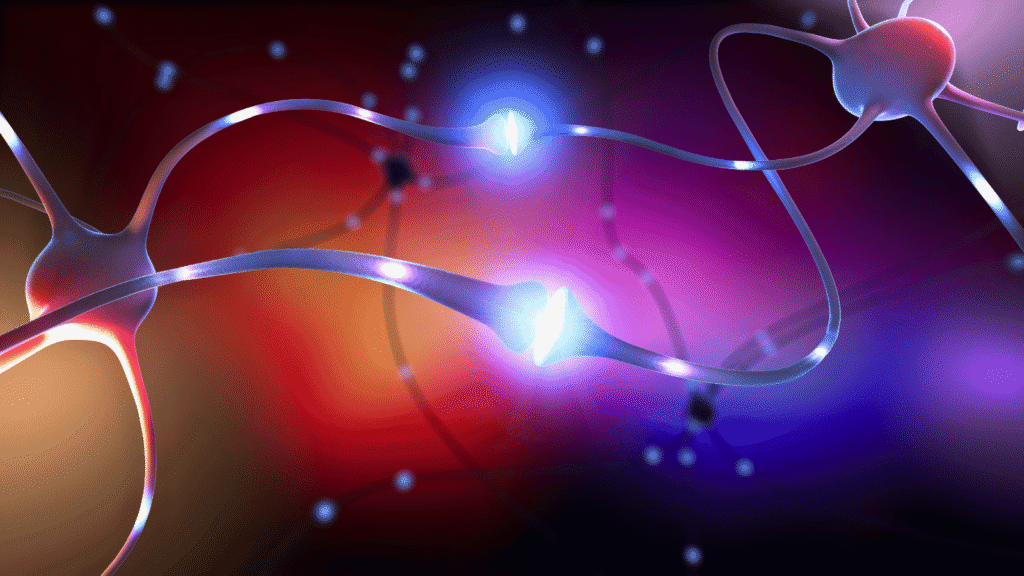In a world where our attention is constantly being pulled in different directions, staying focused has become harder than ever. Every notification, every quick scroll, and every binge-watching session gives our brain a rush of dopamine that feels good in the moment but often leaves us drained, distracted, and unmotivated. That’s where a dopamine detox comes in. It’s not about avoiding happiness or living without pleasure—it’s about creating a reset so your brain can enjoy balance, regain focus, and appreciate life’s simple joys again. With the right approach, a dopamine detox can help you step off the hamster wheel of overstimulation and rediscover a calmer, more productive version of yourself.
- What Is Dopamine and Why Does It Matter?
- The Concept of Dopamine Detox
- Benefits of a Dopamine Detox
- How to Start a Dopamine Detox
- Different Types of Dopamine Detox
- The Science Behind Dopamine Detox
- Practical Tips for a Successful Dopamine Detox
- Long-Term Lifestyle Changes After Dopamine Detox
- Final Thoughts
- FAQs
What Is Dopamine and Why Does It Matter?
Dopamine is a neurotransmitter—a chemical messenger in the brain—that influences how we experience motivation, pleasure, and reward. It acts like a signal that tells us, “this feels good, let’s do it again.” Without dopamine, we wouldn’t feel driven to chase goals or repeat behaviors that help us grow.
It’s not just about pleasure. Dopamine also plays a huge role in learning, decision-making, and even movement. When dopamine levels are balanced, we feel energized, motivated, and focused. But when they’re out of balance—either too high or too low—it can affect mood, productivity, and overall mental health.
Here are some key functions of dopamine:
- Motivation: It fuels the drive to pursue goals and rewards.
- Learning and Memory: It helps us remember rewarding experiences so we seek them again.
- Mood Regulation: It contributes to feelings of happiness and satisfaction.
- Movement Control: It plays a role in coordinating motor skills.
- Reward System: It signals the brain when something feels good, encouraging repetition.
When we constantly chase quick dopamine hits—through junk food, social media, or endless entertainment—our brain adapts by lowering its sensitivity. That means we need more stimulation just to feel the same effect, which can lead to restlessness, distraction, and lack of motivation for tasks that require patience and effort.
In contrast, when dopamine is released gradually through healthy activities like exercise, reading, or meaningful conversations, it builds long-term satisfaction rather than a temporary high. This difference explains why balancing dopamine is essential for mental clarity, productivity, and overall well-being.

The Concept of Dopamine Detox
At its core, the concept of a dopamine detox is about creating space between yourself and the constant stream of stimulation your brain receives every day. Instead of relying on endless sources of quick pleasure, you pause and allow your mind to reset. This practice doesn’t mean removing dopamine completely, since dopamine is a natural and necessary neurotransmitter. What it really means is limiting artificial spikes so your brain can start responding more naturally to ordinary, rewarding experiences.
The principle is simple: when you take a break from overstimulation, your tolerance for dopamine begins to lower. As a result, activities that once felt dull, like reading or going for a walk, suddenly feel more engaging. Over time, this helps restore balance between short-term rewards and long-term satisfaction.
Some of the common activities people avoid during a dopamine detox include:
- Social media scrolling and endless notifications
- Binge-watching TV shows or YouTube videos
- Sugary snacks, fast food, or caffeine overload
- Video games and gambling apps
- Excessive online shopping or browsing
The concept also emphasizes replacing these high-dopamine triggers with low-stimulation activities that calm the mind. This creates a healthier reward system, where your brain learns to enjoy focus-driven and meaningful habits instead of craving constant novelty.
For example, imagine two columns of activities:
| High-Dopamine Habits | Low-Dopamine Alternatives |
|---|---|
| Scrolling TikTok endlessly | Reading a physical book |
| Eating fast food | Cooking a homemade meal |
| Video gaming marathons | Going for a walk outdoors |
| Checking emails constantly | Journaling thoughts |
By practicing this shift, you’re not depriving yourself of joy—you’re retraining your brain to experience pleasure in a balanced, sustainable way. This is the true essence of a dopamine detox.

Benefits of a Dopamine Detox
The benefits of a dopamine detox extend far beyond simply putting your phone away for a few hours. It’s about giving your mind the opportunity to reset so that your attention, motivation, and emotional balance can return to a healthier baseline. When your brain is no longer overstimulated by constant dopamine spikes, you begin to notice meaningful improvements in many areas of life.
One of the biggest benefits is improved focus. Without the pull of distractions, you can concentrate for longer periods, making it easier to tackle deep work or study sessions. This ability to stay engaged with a task not only increases productivity but also boosts the satisfaction you feel when completing something meaningful.
Another benefit is reduced anxiety and stress. The cycle of chasing notifications and quick rewards often leaves the nervous system in a state of constant alertness. By stepping away, your brain gets a chance to slow down, lowering feelings of restlessness and overwhelm. Many people report feeling calmer, more grounded, and more present after even a short detox.
Dopamine detoxing also helps with emotional balance. When you are not relying on external stimulation for happiness, you begin to feel more in control of your mood. This builds resilience, making it easier to navigate challenges without immediately seeking a quick distraction.
There are also physical benefits. People often find they sleep better, have steadier energy levels, and experience fewer headaches or fatigue when they reduce screen time and overstimulation. This creates a healthier rhythm for both mind and body.
Some of the most common benefits people notice include:
- Sharper concentration and reduced procrastination
- More motivation for long-term goals
- Lower stress and anxiety levels
- Improved self-control and discipline
- Rediscovery of enjoyment in simple, everyday activities
- Better sleep quality and consistent energy
Ultimately, the benefits of a dopamine detox ripple into every area of life. It strengthens the connection between your actions and your long-term goals, while also helping you find joy in moments that may have previously gone unnoticed.

How to Start a Dopamine Detox
Getting started with a dopamine detox doesn’t have to be complicated, but it does require intention. The first step is to identify what’s truly draining your focus and creating constant stimulation. For most people, this includes things like social media, binge-watching, gaming, or unhealthy snacking. Writing these down makes it easier to recognize what to avoid during your detox.
Once you know your triggers, the next step is to choose the right timeframe. Some people feel comfortable starting with a 24-hour break, while others prefer easing in with just a few hours each day. The important thing is to pick a duration that feels challenging but still realistic.
It also helps to plan ahead and replace stimulating habits with calmer, low-dopamine activities. Without this step, the detox can feel like a void that leads to boredom. Here are some options you can use to fill the gaps:
- Reading a physical book or novel
- Journaling or creative writing
- Going for a walk outdoors
- Practicing meditation or deep breathing
- Engaging in light exercise or yoga
- Spending time on a hobby like drawing, music, or cooking
Another useful technique is to create an environment that supports your detox. Turn off notifications, log out of distracting apps, and prepare simple healthy meals in advance to avoid relying on fast fixes.
Finally, it’s important to approach the detox with curiosity rather than strict self-judgment. You may feel restless or even bored in the beginning, but those feelings are part of the process. Noticing them without giving in is how you retrain your brain. By the end of the detox, many people are surprised at how much calmer, focused, and motivated they feel.

Different Types of Dopamine Detox
There isn’t a one-size-fits-all version of a dopamine detox. The approach you choose depends on which areas of your life feel most overstimulated and in need of balance. Each type of detox targets specific triggers, and many people combine them for a more complete reset.
A digital detox focuses on limiting exposure to screens, social media, and constant notifications. Since smartphones are one of the biggest sources of quick dopamine hits, even a short break from them can feel surprisingly refreshing. Instead of scrolling, you might spend that time reading, exercising, or simply being present in the moment.
A food detox is about reducing the types of foods that create sharp dopamine spikes, such as sugar, fast food, or caffeine. While enjoyable in moderation, these foods often contribute to energy crashes and cravings. Choosing whole foods helps regulate dopamine more naturally and supports stable mood and focus.
A social detox means taking time away from constant interaction, whether online or offline. This isn’t about isolating yourself but rather creating space to reflect without the pressure of constant communication. It’s especially helpful for people who feel drained by endless notifications or social obligations.
A full detox combines all of these approaches, giving your brain a complete reset. It can feel challenging at first, but the rewards are often the most noticeable. Even just a weekend without screens, processed food, and unnecessary distractions can leave you feeling calmer, clearer, and more focused.
Here’s a quick way to think about the main detox types:
- Full Detox → Combines all of the above for maximum reset
- Digital Detox → Reduces overstimulation from screens and notifications
- Food Detox → Balances energy by avoiding sugar, caffeine, and processed foods
- Social Detox → Creates space for reflection and reduces pressure from constant interaction

The Science Behind Dopamine Detox
The science of dopamine detox lies in understanding how the brain’s reward system functions. Dopamine itself isn’t the problem—it’s the way our habits repeatedly overstimulate its release. Every time you reach for your phone or snack on something sugary, your brain rewards you with a dopamine hit. When this cycle happens too often, it reduces your sensitivity, so normal tasks like reading, working, or even resting feel dull in comparison.
A detox helps break this cycle by lowering exposure to high-stimulation triggers. This doesn’t lower dopamine levels, but it allows your brain’s receptors to become more balanced. The effect is similar to resetting tolerance. Activities that once felt unappealing, like studying or exercising, start to feel satisfying again because your brain isn’t overloaded with artificial spikes.
Neuroplasticity research shows that the brain is always adapting based on repeated behaviors. When you choose to step away from constant dopamine triggers, you begin rewiring your brain to prefer slower, more meaningful forms of reward. Over time, this leads to greater focus, discipline, and patience.
Studies in behavioral psychology also highlight the difference between immediate rewards and delayed rewards. Quick hits like social media scrolling give an instant dopamine release, but they fade quickly. Delayed rewards, like completing a project or exercising regularly, create longer-lasting satisfaction. A dopamine detox helps shift the brain’s preference back toward delayed rewards.
To put it simply:
- Too much instant stimulation = reduced motivation for meaningful tasks
- Reduced stimulation = restored sensitivity and enjoyment of long-term rewards
This reset is what makes dopamine detox such a powerful tool for building better habits and regaining focus.

Practical Tips for a Successful Dopamine Detox
A dopamine detox can feel challenging at first, but approaching it with the right mindset and simple strategies makes it much easier to follow through. One of the most important things is to prepare ahead of time so you’re not caught off guard by cravings or boredom. This might mean planning out alternative activities, setting boundaries with technology, or even creating a dedicated space where you can unwind without distractions.
It also helps to focus on gradual change rather than perfection. Even if you start with just a few hours a day away from overstimulation, you’ll begin noticing benefits. Over time, you can extend the detox and make it part of your lifestyle. To keep yourself on track, use small reminders of why you’re doing this in the first place—whether that’s better focus, less stress, or improved self-control.
Here are some practical tips you can try during your detox:
- Limit Screen Time: Use app blockers or set time limits on the apps that consume most of your attention.
- Replace, Don’t Just Remove: Swap scrolling with activities like journaling, sketching, or reading a book.
- Set Boundaries: Turn off notifications, put your phone in another room, or create tech-free hours in your day.
- Prepare Healthy Alternatives: Keep nutritious snacks on hand to avoid falling back into junk food habits.
- Track Your Progress: Write down how you feel each day to notice changes in mood, focus, and energy.
- Practice Mindfulness: Short breathing exercises or meditation sessions help manage cravings and reduce restlessness.
- Reward Yourself Healthily: After completing a detox, celebrate with something that feels good but doesn’t trigger overstimulation, like a nature walk or a creative hobby.
A small table can also be useful to organize your detox plan:
| Trigger Activity | Healthier Alternative |
|---|---|
| Social media scrolling | Reading or journaling |
| Junk food snacking | Fruits, nuts, or smoothies |
| Binge-watching shows | Outdoor walk or exercise |
| Constant texting | Mindful silence or solo time |
The key is to treat this process as an experiment rather than a punishment. By replacing overstimulating habits with healthier choices, you give your brain the reset it needs while building habits that last far beyond the detox itself.
Long-Term Lifestyle Changes After Dopamine Detox
Once you’ve experienced the reset of a dopamine detox, the real transformation comes from the small lifestyle changes you carry forward. A single detox can give you clarity, but lasting results depend on building healthier habits that prevent overstimulation from creeping back in.
One of the most effective ways to maintain balance is to set boundaries with technology. Creating specific times for checking emails or using social media prevents mindless scrolling from taking over. Pairing this with “screen-free” periods each day helps your brain stay refreshed. Food choices also matter—cutting back on sugar and processed snacks while focusing on whole foods keeps your energy and mood stable throughout the day.
Regular mindfulness practices like meditation, journaling, or simply sitting quietly with your thoughts can anchor you in the present moment. These practices might feel simple, but over time, they re-train your brain to enjoy calm and stillness without constant stimulation. Another important lifestyle shift is prioritizing deep work. Instead of multitasking, give your full attention to one meaningful task at a time. This builds discipline and makes accomplishments more rewarding.
To make these changes stick, try to create a personal “balance toolkit” of go-to habits that replace overstimulation. Some ideas include:
- Daily movement like yoga, walking, or light exercise
- Dedicated reading time away from screens
- Socializing with intention rather than constant messaging
- Creative hobbies such as drawing, writing, or music
- Scheduled breaks to rest your eyes and mind
When these small habits become part of your everyday life, they create a rhythm that supports focus, productivity, and peace of mind. Over time, you’ll notice that the pull of quick dopamine hits weakens, while the satisfaction from meaningful activities grows stronger.
Final Thoughts
A dopamine detox is not about cutting joy out of life—it’s about creating space for the right kind of joy. By stepping back from the constant flood of stimulation, you give your brain the chance to reset and rediscover balance. This practice helps you feel calmer, think more clearly, and stay committed to the tasks that really matter. Over time, you’ll find that ordinary activities like reading, cooking, or even enjoying a quiet walk carry a deeper sense of fulfillment because your brain isn’t constantly chasing the next quick reward.
It’s worth remembering that a dopamine detox doesn’t need to be extreme to be effective. Even small, intentional breaks can help you regain focus and feel more grounded. The real power comes from consistency and applying what you’ve learned to your everyday routines. By weaving in healthier habits and reducing overstimulation, you create a lifestyle that supports long-term productivity and peace of mind.
If you’re ready to take this journey further, my book Digital Detox for the Restless Mind provides practical steps and gentle guidance to make your detox experience not only manageable but deeply rewarding. It’s a great companion for anyone wanting to break free from distraction and build a calmer, more focused life.




